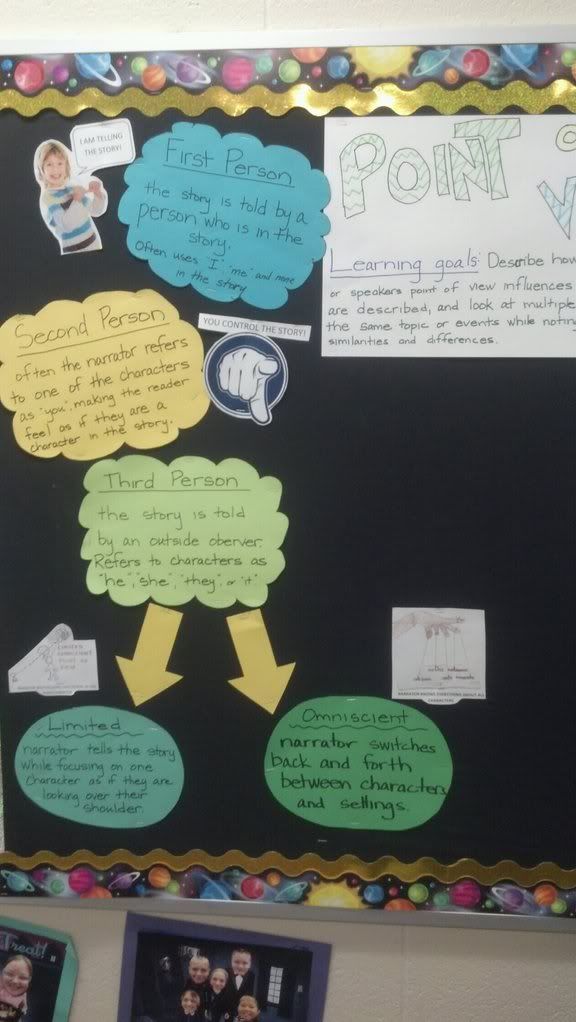Now, I just need some way to keep record of them so that the next time we need to create one, I can refer back to what was done before. For the time being, I've taken to taking pictures of them. So with that said, I created an anchor chart over point of view in class. The thing I like about them is that the students help create them.
 Here is part of our anchor chart that we use to learn and think about Point of View. The students are always walking over and looking at it more closely. We also have a list of Criteria on the other half of the board that the students and I created to ensure our success in this topic.
Here is part of our anchor chart that we use to learn and think about Point of View. The students are always walking over and looking at it more closely. We also have a list of Criteria on the other half of the board that the students and I created to ensure our success in this topic.To help us practice writing from another point of view, I had seen on another teacher's blog that they used Nursery Rhymes to write form a point of view. As a teacher, I am very good at begging, borrowing, and using ideas from other teachers. Unfortunately, I can't for the life of me find the initial blog post that I had seen the idea from, because I would love to give that great teacher credit. (If anyone knows, please forward that information to me so I can give that person some props).
The jest of the task is that students continue a Mother Goose Nursery rhyme from the point of view of either one of the characters or someone who was a bystander witnessing the event. All in all, they turned out pretty good.
Check out our Point of View blog posts at: http://kidblog.org/boyersbloggers11. Please feel free to leave a comment, the students love getting comments from other teachers and students from other classrooms.
So far, the hardest thing for us to understand, find, and practice is reading different views of the same event. Any suggestions and advice would be great.





